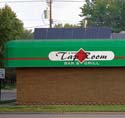You're as likely to hear the word "sustainable" around the office water cooler these days as you are to hear "timesheets" or "return on investment." Something has occurred in the business world: Companies are becoming attuned to the notion of sustainability.
Whether it is for public relations or because of concerns about energy management or supply chain reliability, businesses are paying attention to their effects on the environment. And with this new dynamic in mind, Professional Roofing and the Center for Environmental Innovation in Roofing introduce Environment Matters, a new bimonthly column focusing on how the roofing industry intersects with the environment and energy consumption.
The new column
The built environment represents a substantial share of global energy consumption and greenhouse gas emissions (GHGs). In the U.S., the built environment is responsible for an estimated 42 percent of total energy use, 71 percent of electricity consumption and 48 percent of all GHGs.
But to date the magnitude of the response within the building industry hasn't been equal to the challenge.
For instance, during 2006 a mere 2 percent of the nonresidential building stock in the U.S. was registered under Leadership in Energy and Environmental Design criteria issued by the U.S. Green Building Council.
Solar power is another example. The U.S. enjoys one of the best climates for solar energy production and should be much farther down the path toward renewable energy. But because an inadequate structure is in place to foster its development, we lag behind nations such as Germany, which hosts a climate akin to that of Seattle.
This column will explore various topics, such as energy efficiency in the built environment; the transformational effect and market implications of rigorous life-cycle assessment; work force development in the energy and environmental fields; the future of carbon labeling; and a host of public policy issues and initiatives.
Environment Matters will delve into subjects relevant to the climate discussion, such as what legislative and regulatory initiatives mean for businesses, individuals and the general economy; carbon labeling; the relative virtues of a "carbon tax" versus a "cap and trade" scheme; pricing of GHGs as a tool to drive energy efficiency; and the effect of human activity (or anthropogenic impact) on global warming.
Many issues this column will examine undoubtedly will generate spirited discussion. The center strongly believes if the industry is going to manage the transformation to green building successfully, an open, vigorous dialogue is essential. A healthy debate will serve the industry as it has a powerful role and formidable obligation before it—namely, providing consumers with the information necessary to make smarter, informed decisions.
Philosophy of innovation
There essentially are two responses at our disposal to the energy and environmental challenges we face on a global scale. One option is to pursue a course of government-driven mandates designed to rein in consumption. The second is to cultivate innovative technologies and practices.
History has shown that mandates are a poor substitute for innovation. For a difficult problem, there rarely is a one-size-fits-all solution. Innovation, on the other hand, permits the requisite flexibility to expand opportunities for consumers and businesses and, importantly, is the best method for tapping the creative energies and talents of our nation's best and brightest.
The path ahead
If you are worried about the government's heavy hand, your fear is well-founded. Regulators increasingly will exert power on all aspects of energy consumption. The task for the business community is to focus on market-oriented solutions.
Environment Matters will be committed to distilling critical knowledge and serving the roofing industry by providing expert analysis and information regarding the environment and roofing.
Craig Silvertooth is executive director of the Center for Environmental Innovation in Roofing.



